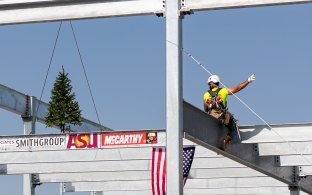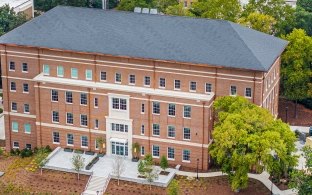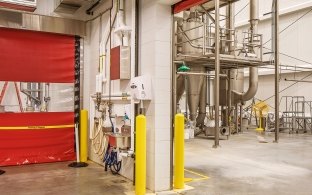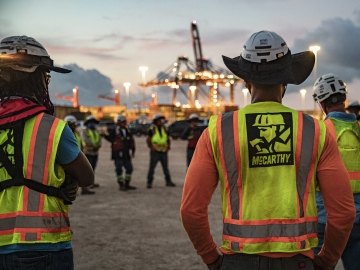McCarthy Completes U.S. Department of Agriculture’s National Bio and Agro-Defense Facility
Nation’s first biosafety level 4 containment facility for animal disease research


McCarthy Mortenson NBAF, a joint venture, has announced completion of construction and commissioning for the National Bio and Agro-Defense Facility in Manhattan, Kansas, the nation’s leading animal disease research facility. Once fully operational, NBAF will have laboratories functioning at multiple biosafety levels, including the first facility in the United States with biosafety level 4 containment capable of housing large livestock.
With construction complete the US Department of Agriculture (USDA) is taking steps to assume control of NBAF from the Department of Homeland Security Science and Technology Directorate (DHS S&T). These steps include a phase called the operational endurance period.
“During this phase, USDA’s work processes must be tested and validated in accordance with the building systems. Scientists will confirm laboratory set-up, evaluate standardized laboratory work processes for consistency and safety, and ensure equipment is functioning appropriately,” said Dr. Ken Burton, NBAF Deputy Director. “These are critical initial steps to ensure all research and diagnostics can be accomplished safely and effectively.”
Supporting Vital Biosafety Research
Developed to ensure public health and the safety and security of the nation’s food supply, the 707,000 gross square feet facility is located on a 48-acre site. It is designed with stringent containment, blast-resistant and anti-terrorism requirements, as well as the Nuclear Regulatory Commission (NRC) high wind design criteria adopted by DHS.
The NBAF complex includes 574,000 gross-square-feet of laboratory space, including biosafety level 2, 3 and 4 laboratories. The BSL level 4 containment laboratories require the highest level of safety protocols and equipment, enabling scientists to safely study and diagnose a variety of high-consequence animal pathogens.
In addition, an 87,000-square-foot, free-standing Central Utility Plant (CUP) houses boilers, chillers, emergency diesel generators and other support elements for the main laboratory facility.
Despite challenges and delays brought about by the COVID-19 pandemic and pushing back the commissioning timeline several times, the project with commissioning came in under the $1.25 billion budget established by federal officials in 2014.
As a replacement for the aging Plum Island Animal Disease Center (PIADC), NBAF will put the United States on the front line of livestock animal health research. The full transfer of the scientific mission from Plum Island Animal Disease Center in New York likely will be completed within the next two years.
In addition to having multiple state-of-the-art laboratories, NBAF will also have a Biologics Development Module (BDM to explore the development and production of potential vaccines, diagnostic platforms and veterinary medical countermeasures.
The construction team is a joint venture of St. Louis-based McCarthy Building Companies, Inc. and Minneapolis-based Mortenson Construction. The McCarthy/Mortenson team was selected through a best-value competitive process based on the team’s expertise in constructing biosafety facilities and its experience in the local area.
The NBAF Design Partnership (NDP) is the architect and engineer on the project. NBAF Design Partnership, a joint venture of Perkins+Will, Flad & Associates Architects, Merrick & Company, Affiliated Engineering Inc., and CCRD Partners. The preconstruction, construction and commissioning contract was valued at $1,060 billion.
McCarthy has completed similar biosafety-level projects for the Centers for Disease Control and Prevention in Atlanta, the U.S. Department of Agriculture in Ames, Iowa, and Boston University in Boston. Mortenson Construction brings long-standing, local experience in the Manhattan, Kan., area, along with the experience of working on a similar laboratory project at the University of Colorado Denver’s Research II in Aurora, Colo.
By the Numbers:
- 60,000 cubic yards of concrete (equivalent of a 300-mile sidewalk from Manhattan, Kan. To Oklahoma City, Okla.
- 3-million-square-feet of paint
- 4.5-million-linear-feet of electrical wire (equivalent of 850 miles from Manhattan, Kan. To New Orleans, La.
- 13,000 tons of steel, equivalent to weight of approximately 6,500 cars
- 4-million hours of on-site labor, equivalent to 385 people working 1,925 years
- Structure built to withstand a car flying through the air at 92 mph.
- The NBAF Central Utility Plant (CUP) could power 15,750 homes
PHOTO CREDIT: U.S. Department of Agriculture









